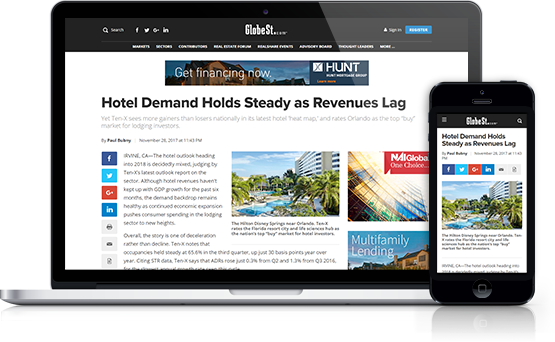Apartment buildings continue to propagate in and around urban cores to satisfy move back in trends and meet expected continuing demand from career-focused young adults. High rises with floor-to-ceiling glass and surrounding views, granite kitchen counter tops, well-appointed gyms, roof decks, pools, and business centers are all the rage. Developers and advisors sell institutional partners and investors on almost can't-miss “build-to-core” projects. Build them, lease them up, sell them to core investors hungry for any product, or in some cases hold them longer-term with the lucrative potential to convert into condominiums.
In the past, I have written about the apartment waves in Toronto and downtown Los Angeles, but the same phenomenon is happening in just about every major urban core. Planners and local pols give way and let developers build cheek-to-jowl projects on strips in old industrial districts or in emerging neighborhoods with plenty of nightlife--bars, trendy restaurants, and sports arenas. The prime target renters are high-salaried young professionals—singles and couples, looking for convenience to get to nearby work places and pay for the privilege. Their influx is supposed to create greater 24-hour vibrancy as well as tax base, while the need for affordable housing isn't much addressed since developers can't make money that way, and essentially they get a pass despite some lip service.
In New York—long a veritable kingdom of apartment towers—the building binge has been filling in the far West Side, starting around the High Line, then through and north of Hudson Yards in once active light manufacturing corridors. Of course, you also see the phenomenon in Brooklyn along the waterfront in Williamsburg and in Long Island City south of the 59th Street (Queensboro or Ed Koch take your pick) Bridge. All these projects offer exciting views across rivers of cityscapes and sunsets, but their various in-house amenities must make up for the desultory, sterile, even claustrophobic streetscapes enveloping them.
Recommended For You
Want to continue reading?
Become a Free ALM Digital Reader.
Once you are an ALM Digital Member, you’ll receive:
- Breaking commercial real estate news and analysis, on-site and via our newsletters and custom alerts
- Educational webcasts, white papers, and ebooks from industry thought leaders
- Critical coverage of the property casualty insurance and financial advisory markets on our other ALM sites, PropertyCasualty360 and ThinkAdvisor
Already have an account? Sign In Now
*May exclude premium content© 2025 ALM Global, LLC, All Rights Reserved. Request academic re-use from www.copyright.com. All other uses, submit a request to [email protected]. For more information visit Asset & Logo Licensing.








